|
Sempringham
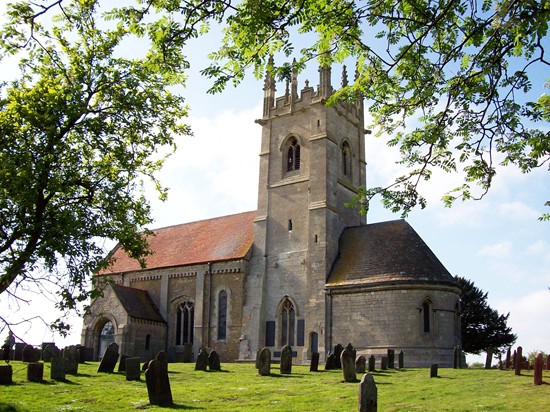
Early spring at St Andrew's Church
The name of Sempringham was once known
throughout the land but today it is a difficult place to find, well off the
beaten track at the end of an isolated farm road. But once there, the rewards
are great. Funeral corteges and wedding parties must negotiate this hazardous
and uneven surface to reach the church for it appears to be well used and the
graveyard is full with recent burials. It is also extremely well kept, far
better than most of the churchyards in this part of South Lincolnshire.
This is the site of the famous St Mary's Priory founded by the crippled priest St. Gilbert in about 1139 as a home for his white-robed Gilbertian order, the only purely English monastic order and the only one which catered for men and women alike. It was sited to the south of the present church but was surrendered and destroyed in 1558 and all that remains today are signs of earthworks, although excavations have been carried out that revealed the foundations together with fish ponds and the old well. Remains of stained glass, pottery, coins and carved masonry have also been found and stones from the original buildings are thought to have been used in the construction of some houses in the locality and in marking the well, now an attraction to visitors as the Holy Well.
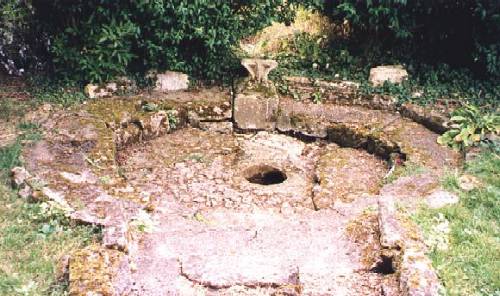
The church of St Andrew's was once much larger than the present building but a Norman chancel and transept were taken down in 1788 after becoming dilapidated, leaving the tower unusually at the east end of the building. A priest's door was also removed and in 1899, the arch was returned and incorporated into a new porch that was designed to protect the original Norman door, a project that was carried out to mark Queen Victoria's Diamond Jubilee in 1897.
|
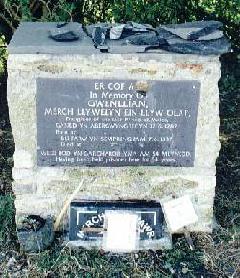
The
old memorial, damaged by
vandals in 2000 |
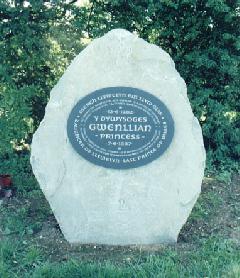
The
new memorial, erected in
the summer of 2001 |
A few yards to the south of the church, alongside the track that leads to the main gate, stands a stone and slate memorial which honours the mediaeval Princess Gwenllian, daughter of Llewellyn, the last true-born Prince of Wales, and the only grand-daughter of Simon de Montfort, who was held captive here for more than half a century. Gwenllian was born at Abergwyngregyn in Wales on 12th June 1282 but when she was only 17 months old, Edward I, fearing that she might threaten his suzerainty over Wales, wrote to the prior and prioress at Sempringham, the Gilbertian Abbey which then stood on this site, asking them to admit her to the order and habit "having the Lord before our eyes, pitying also her sex and age, that the innocent and unwitting may not seem to atone for the iniquity and ill-doing of the wicked and contemplating specially the life of your Order".
Four years after Gwenllian was admitted to Sempringham, Edward issued a mandate to Thomas Normanvill "to go to the places where the daughters of Llewellyn and of David his brother, who have taken the veil in the Order of Sempringham, are dwelling, and to report upon their state and custody by next Parliament". Sempringham Abbey was allowed to acquire certain lands, including Ketton, Cottesmore, Stamford and Casterton, because Edward had shared them with Gwenllian. Then in 1327, when Edward III stayed at Sempringham, he granted Gwenllian a yearly pension of £20 for life. She died ten years later on 7th June 1337 after 54 years of virtual imprisonment by the order.
The memorial was erected in 1993 as a tribute to the princess and financed by public subscription raised by the Princess Gwenllian Society. Coach parties of Welsh pilgrims regularly visit the site to pay their respects and the memorial was recently blessed by the Bishop of Bangor. Unfortunately, it was vandalised during the late summer of 2000. They shattered the heavy Welsh slate capping and punctured the inscribed blue slate tablet but the culprits were never found. The society however replaced it
at a cost of £6,000 during the summer of 2001. Their secretary Mrs Mallt Anderson, said: "We have been grateful for the support of friends in Lincolnshire who have helped us so readily in the past in our determination to maintain and care for this tiny corner of an English field that is forever Wales."
There
was once a golf club here called Sempringham Abbey Golf Club, formed in 1893 and
in existence for about 25 years. It was a modest venture consisting of a
nine-hole course over undulating pasture land but members were enthusiastic in
pursuance of the ancient game and the associated social activities. They held an
annual invitation ball in the public hall at nearby Billingborough when the
club's colours of red and white predominated the decorations. When the ball was
held in 1902, the Stamford Mercury reported on Friday 17th January:
"Between 70 and 80 ladies and gentlemen were present from all parts of the
district and the band played a charming selection of music, and dancing, which
commenced soon after 8 o'clock, was continued until nearly 3 am. A dainty
supper, provided by the ladies' committee, was set out in the east room amidst
pretty and tasteful embellishments." The club continued in existence until the
Great War of 1914-18 when it closed down through lack of support and the
clubhouse was sold to Sleaford Golf Club which was also given one of the silver
trophies.
|
A VISION FROM THE
PAST
The new memorial to the captive nun Princess Gwenllian was made from granite quarried at Bangor in Gwynedd,
Wales, near to her birthplace, and a strange tale has become associated with it after some who first saw it claimed to have seen a vision.
Mrs Mallt Anderson, secretary of the Princess Gwenllian Society which financed the project, explained that the silhouette of a nun with her head slightly bowed became evident when the new stone was at first stood upright in the sculptor's workshop.
"Those familiar with the dress and habit of a Gilbertine nun will recognise that the stone has a similar outline", she said. "It is of course just a coincidence but it does remind us that some things are inexplicable, even to the cynics of the present day."
To witness the vision for yourself, Mrs Anderson suggests that you stand of the little bridge beside the memorial and let your eyes first rest on the top of the stone and then follow the back outline from top to bottom and the shape of the mysterious nun will appear. |
|
GETTING THERE
The best route to Sempringham church is along the A15
and then fork off on the B1177 north of Bourne, taking the second
left turn at Pointon village and then look out for the blue sign
alongside a farm track on the left hand side. You will then face almost a mile of uneven cart track but a glimpse of the pinnacled
tower of the Norman church is always with you behind trees on the
horizon, a lonely landmark on a hillock among cultivated fields, and
soon the winding road will bring you to its door. |
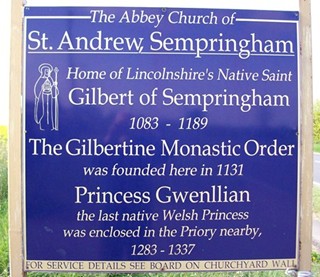 |
|
REMEMBERING THE PRINCESS IN HER HOMELAND |
|
A mountain in North Wales has been named after
the princess. Carnedd Uchaf in the Ogwen Valley of Snowdonia will in
future be known as Carnedd
Gwenllian in her memory. Other mountains in the area already remember members
of her family and the Ordnance Survey (OS) agreed to put her on the
map after a campaign by the Princess Gwenllian Society
and
consultation with the National Trust and the Snowdonia National Park
Authority. |
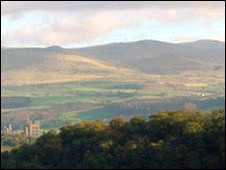
The peak is just to the right above
Penrhyn Castle |
|
But to avoid confusing ramblers, the old name will remain
on maps in brackets. "Any changes need to be carefully considered
because they are relied on by the emergency services and mountain
rescue teams to help find stranded climbers", explained OS spokesman
Paul Beauchamp. "But an agreement has been reached and we are
delighted to reflect the name change and to play a role in reuniting
Princess Gwenllian with her father, mother and uncle among the
mountain peaks of her homeland."
The renaming ceremony took place at the Bulkeley Hotel in Beaumaris,
Anglesey, on Saturday 26th September 2009. The national anthem was
sung as dignitaries gathered to mark the event. Princess Gwenllian
Society member Kathryn Pritchard Gibson, who lives in the house
where Gwenllian was born, said the renaming was a "fitting tribute"
to the princess and added: "It is good to remember somebody who was
taken in that way and never allowed to have a life. She was just
locked behind the world, never allowed out from that monastery. The
mountains here are named after her mother and father and uncle, so
to rename another is a great tribute and almost brings her home in a
way." |
|
SEMPRINGHAM TODAY |
|
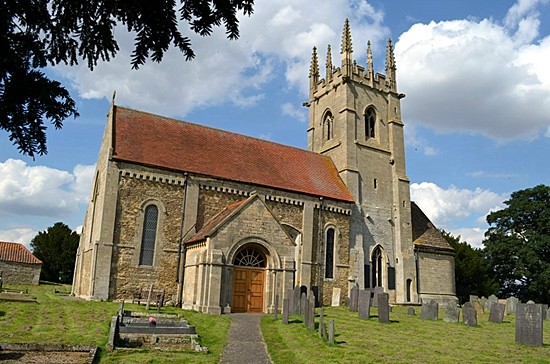 |
|
SEMPRINGHAM IN PAST
TIMES
|
|
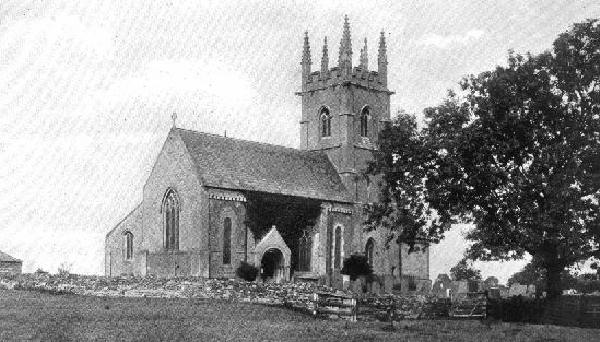 |
|
Sempringham Church pictured in
1897 before the porch
was added to the south side. |
|
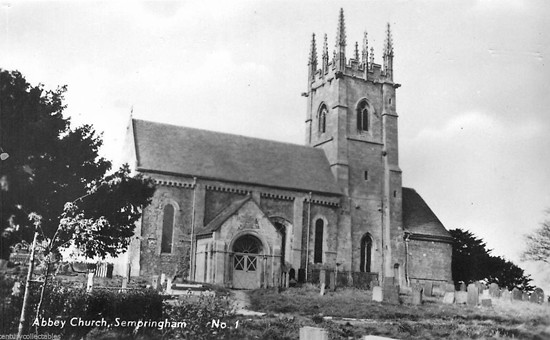 |
|
A picture postcard of the church from circa
1930. |
|
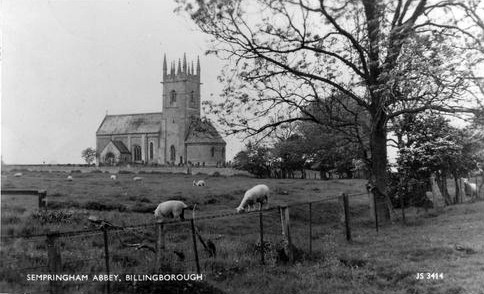 |
|
Another picture
postcard from around 1950. |

Go to:
Main Index Villages
Index
|









